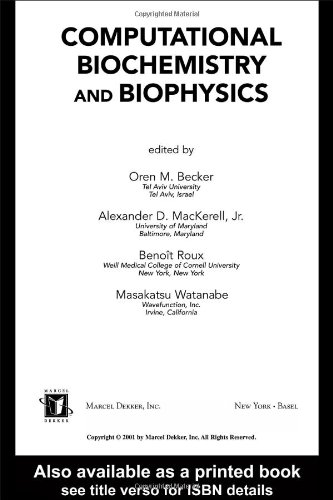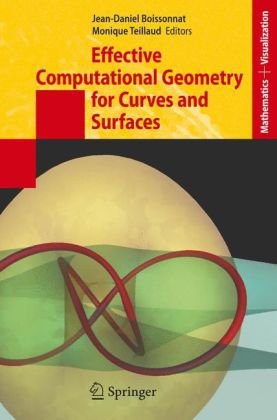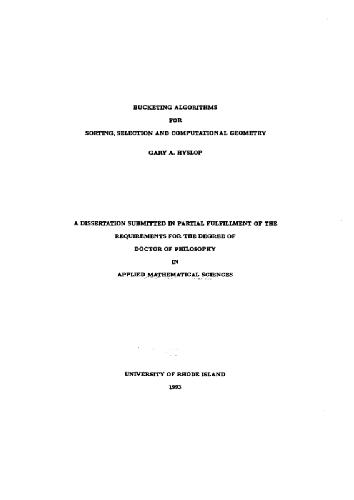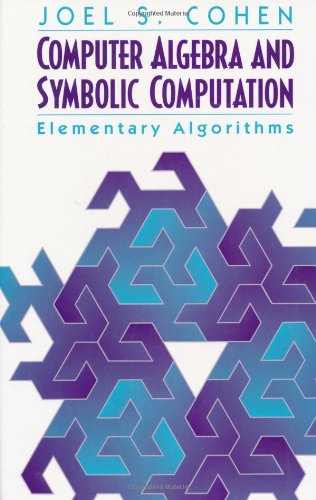Oren M. Becker, Alexander D. MacKerell Jr., Benoit Roux, Masakatsu Watanabe082470455X, 9780824704551, 9780585404097
Table of contents :
Cover……Page 1
Foreword……Page 4
Preface……Page 8
Contents……Page 10
I. INTRODUCTION……Page 14
AND BIOPHYSICS……Page 15
III. SCOPE OF THE BOOK……Page 17
REFERENCES……Page 18
I. INTRODUCTION……Page 20
Biological Molecules……Page 21
C. Extensions of the Potential Energy Function……Page 24
D. Alternatives to the Potential Energy Function……Page 25
B. Overview of Available Force Fields……Page 26
C. Free Energy Force Fields……Page 27
D. Applicability of Force Fields……Page 28
Force Fields……Page 29
B. Optimization Procedures Used in Empirical Force Fields……Page 30
D. Use of Quantum Mechanical Results as Target Data……Page 35
E. Extension of Available Force Fields: Application to CHARMM……Page 36
V. FUTURE DIRECTIONS……Page 47
REFERENCES……Page 48
I. INTRODUCTION……Page 52
II. TYPES OF MOTIONS……Page 53
DYNAMICS……Page 54
A. Newton’s Equation of Motion……Page 55
B. Properties of Newton’s Equation of Motion……Page 56
C. Molecular Dynamics: Computational Algorithms……Page 57
A. Assigning Initial Values……Page 61
B. Selecting the Integration Time Step……Page 62
C. Stability of Integration……Page 63
D. Simulation Protocol and Some Tricks for Better Simulations……Page 64
A. Time Series……Page 66
C. Correlation Functions……Page 67
D. Potential of Mean Force……Page 68
A. Stochastic Dynamics……Page 69
C. Molecular Dynamics in Alternative Ensembles……Page 70
A. Constrained Dynamics……Page 75
B. Multiple Time Step Methods……Page 76
C. Other Approaches and Future Direction……Page 78
REFERENCES……Page 79
I. BACKGROUND……Page 82
A. High Temperature Molecular Dynamics……Page 83
B. Monte Carlo Simulations……Page 84
C. Genetic Algorithms……Page 86
D. Other Search Methods……Page 87
A. Minimization……Page 90
B. Simulated Annealing……Page 95
IV. CONFORMATIONAL ANALYSIS……Page 96
A. Similarity Measures……Page 97
B. Cluster Analysis……Page 98
C. Principal Component Analysis……Page 99
REFERENCES……Page 102
I. INTRODUCTION: BASIC ELECTROSTATICS……Page 104
II. CONTINUUM BOUNDARY CONDITIONS……Page 111
III. FINITE BOUNDARY CONDITIONS……Page 113
IV. PERIODIC BOUNDARY CONDITIONS……Page 117
V. STRENGTHS AND WEAKNESSES OF VARIOUS APPROACHES……Page 125
REFERENCES……Page 126
II. INTERNAL AND CARTESIAN COORDINATES……Page 128
A. Selection of Variables……Page 132
B. Energy Gradients……Page 134
A. Main Problems and Historical Perspective……Page 135
B. Dynamics of Molecular Trees……Page 136
C. Simulation of Flexible Rings……Page 138
A. Time Step Limitations……Page 140
B. Standard Geometry Versus Unconstrained Simulations……Page 141
VI. CONCLUDING REMARKS……Page 142
REFERENCES……Page 143
I. INTRODUCTION……Page 146
A. The Potential of Mean Force……Page 148
B. Relative and Absolute Values: Reversible Work……Page 150
III. DECOMPOSITION OF THE FREE ENERGY……Page 151
A. Nonpolar Free Energy Contribution……Page 152
A. The Poisson Equation for Macroscopic Media……Page 153
C. Treatment of Ionic Strength……Page 155
D. Treatment of a Transmembrane Potential……Page 156
A. Statistical Mechanical Integral Equations……Page 157
B. Solvent Boundary Potentials and Implicit/ Explicit Mixed Schemes……Page 158
C. Solvent- Accessible Surface Area Models……Page 159
D. Knowledge- Based Potentials……Page 160
REFERENCES……Page 161
I. INTRODUCTION……Page 166
II. NORMAL MODE ANALYSIS IN CARTESIAN COORDINATE SPACE……Page 167
a Large Hessian……Page 169
B. Normal Mode Analysis in Dihedral Angle Space……Page 171
C. Approximate Methods……Page 172
IV. NORMAL MODE REFINEMENT……Page 173
B. Normal Mode NMR Refinement……Page 174
C. Validity of the Concept of a Normal Mode Important Subspace……Page 175
B. Anharmonicity and Normal Mode Analysis……Page 176
VI. CONCLUSIONS……Page 178
REFERENCES……Page 179
I. INTRODUCTION……Page 182
A. Thermodynamic Cycles for Solvation and Binding……Page 183
B. Thermodynamic Perturbation Theory……Page 185
C. Dummy Atoms and Endpoint Corrections……Page 190
D. Other Thermodynamic Functions……Page 193
III. STANDARD BINDING FREE ENERGIES……Page 194
A. Conformational Restraints or Umbrella Sampling……Page 197
B. Weighted Histogram Analysis Method……Page 199
C. Conformational Constraints……Page 200
A. Dielectric Reaction Field Approaches……Page 201
B. Lattice Summation Methods……Page 204
A. Multisubstate Approaches……Page 205
C. Moving Along……Page 207
VII. PERSPECTIVES……Page 208
REFERENCES……Page 209
A. Defining Reactant and Product ‘‘ States’’……Page 212
B. Phenomenological Rate Equations……Page 213
A. Building the TST Rate Constant……Page 214
B. Some Details……Page 216
III. CORRECTIONS TO TRANSITION STATE THEORY……Page 217
A. Computing Using the Reactive Flux Method……Page 218
B. How Dynamic Recrossings Lower the Rate Constant……Page 220
C. An Efficient Method for Computing Small Values of……Page 221
IV. FINDING GOOD REACTION COORDINATES……Page 222
V. GLOBAL SEARCHES FOR IMPORTANT TRANSITION PATHWAYS……Page 223
B. Choice of a Differential Cost Function……Page 224
D. Onsager– Machlup Paths……Page 226
A. The Use of Constraints and Restraints……Page 227
VII. FOCAL METHODS FOR REFINING TRANSITION STATES……Page 228
VIII. HEURISTIC METHODS……Page 230
IX. SUMMARY……Page 231
REFERENCES……Page 232
I. INTRODUCTION……Page 234
A. QM– MM Methodology……Page 235
B. The Quantum/ Classical Boundary……Page 239
III. APPLICATIONS……Page 240
A. Triosephosphate Isomerase……Page 241
B. Bovine Protein Tyrosine Phosphate……Page 243
C. Citrate Synthase……Page 244
REFERENCES……Page 247
I. INTRODUCTION……Page 250
AND NEUTRON SCATTERING……Page 252
III. SCATTERING BY CRYSTALS……Page 253
A. Bragg Diffraction……Page 254
B. X- Ray Diffuse Scattering……Page 255
IV. NEUTRON SCATTERING……Page 257
A. Coherent Inelastic Neutron Scattering……Page 258
B. Incoherent Neutron Scattering……Page 259
V. CONCLUSIONS……Page 263
REFERENCES……Page 264
A. Deriving Conformational Restraints from NMR Data……Page 266
C. The Hybrid Energy Approach……Page 268
III. MINIMIZATION PROCEDURES……Page 270
A. Metric Matrix Distance Geometry……Page 271
B. Molecular Dynamics Simulated Annealing……Page 274
C. Folding Random Structures by Simulated Annealing……Page 275
Consistency Hypothesis……Page 277
C. Iterative Explicit NOE Assignment……Page 278
D. Symmetrical Oligomers……Page 279
V. TREATMENT OF SPIN DIFFUSION……Page 280
EXPERIMENTAL DATA……Page 282
VIII. RECENT APPLICATIONS……Page 284
REFERENCES……Page 285
I. INTRODUCTION……Page 288
Sequence……Page 290
B. Aligning the Target Sequence with the Template Structures……Page 292
C. Model Building……Page 293
D. Loop Modeling……Page 298
E. Side Chain Modeling……Page 299
III. AB INITIO PROTEIN STRUCTURE MODELING METHODS……Page 302
IV. ERRORS IN COMPARATIVE MODELS……Page 303
V. MODEL EVALUATION……Page 307
VI. APPLICATIONS OF COMPARATIVE MODELING……Page 308
A. Ligand Specificity of Brain Lipid- Binding Protein……Page 310
VII. COMPARATIVE MODELING IN STRUCTURAL GENOMICS……Page 311
REFERENCES……Page 314
I. INTRODUCTION……Page 326
A. Bayesian Probability Theory……Page 327
B. Bayesian Parameter Estimation……Page 329
C. Frequentist Probability Theory……Page 330
D. Bayesian Methods Are Superior to Frequentist Methods……Page 333
E. Setting Up Bayesian Models……Page 335
F. Simulation via Markov Chain Monte Carlo Methods……Page 339
G. Mixture Models……Page 340
H. Explanatory Variables……Page 342
A. Dirichlet Mixture Priors for Sequence Profiles……Page 343
B. Bayesian Sequence Alignment……Page 345
C. Sequence– Structure Alignment……Page 349
A. Secondary Structure and Surface Accessibility……Page 351
B. Side- Chain Conformational Analysis……Page 352
REFERENCES……Page 357
I. INTRODUCTION……Page 364
APPROACHES TO STUDYING DRUG– RECEPTOR INTERACTIONS……Page 365
A. Ligand- Based Approaches……Page 367
B. Quantitative Structure– Activity Relationship Method……Page 371
C. Structure- Based Drug Design……Page 374
D. Chemical Informatics and Drug Design……Page 376
IV. SUMMARY AND CONCLUSIONS……Page 377
REFERENCES……Page 378
I. INTRODUCTION……Page 384
II. SIMPLE MODELS……Page 387
III. LATTICE MODELS……Page 389
IV. OFF- LATTICE MINIMALIST MODELS……Page 392
A. Unfolding/ Folding Simulations……Page 395
B. Mapping Atomistic Energy Landscapes……Page 396
C. Mapping Atomistic Free Energy Landscapes……Page 401
REFERENCES……Page 402
II. ELECTRON TRANSFER PROPERTIES……Page 406
A. Quantum Chemistry of the Redox Site……Page 408
B. Potential Energy Parameters……Page 409
of the Protein……Page 411
IV. REDOX POTENTIALS……Page 412
B. Calculation of the Energy Changes of the Protein……Page 413
B. Calculation of Differences in the Energy Change of the Protein……Page 417
A. Theory……Page 421
B. Application……Page 423
REFERENCES……Page 424
I. SOLVENT EFFECT ON CHEMICAL PROCESSES……Page 430
B. Simulations……Page 431
C. Reference Interaction Site Model……Page 432
II. OUTLINE OF THE RISM- SCF/ MCSCF METHOD……Page 433
A. Molecular Polarization in Neat Water*……Page 435
B. Autoionization of Water*……Page 436
C. Solvatochromism*……Page 439
D. Conformational Equilibrium*……Page 440
E. Acid– Base Equilibrium……Page 441
F. Tautomerization in Formamide*……Page 445
G. The SN2 Reaction*……Page 446
IV. SUMMARY AND PROSPECTS……Page 449
REFERENCES……Page 451
I. INTRODUCTION……Page 454
A. DNA……Page 455
B. RNA……Page 459
C. Dynamics and Energetics of Oligonucleotides……Page 460
E. Modified Oligonucleotides……Page 461
A. Atomistic Models……Page 462
B. Alternative Models……Page 464
A. Starting Structures……Page 465
B. System Configuration, Solvation, and Ion Placement……Page 467
D. Convergence of MD Simulations……Page 469
E. Analysis of MD Simulations……Page 470
REFERENCES……Page 472
I. INTRODUCTION……Page 478
A. System Size and Construction……Page 480
B. Force Fields……Page 481
C. Ensembles……Page 483
B. Density Profiles……Page 484
C. Solvation of the Lipid Polar Groups……Page 486
Dipole Potential……Page 487
B. Qualitative Picture on the 100 ps Time Scale……Page 489
C. Incoherent Neutron Scattering Measurements of Lipid Dynamics……Page 490
on Lipid Dynamics……Page 492
E. Lipid Center- of- Mass ‘‘ Diffusion’’……Page 498
F. Hydrocarbon Chain Dynamics……Page 501
G. Water Dynamics……Page 504
V. SUMMARY AND CONCLUSIONS……Page 506
REFERENCES……Page 507
A. Internet Resources for Topics in Selected Chapters……Page 510
B. Molecular Modeling and Simulation Packages……Page 511
C. Molecular Visualization Software……Page 512
Molecular Modeling Software……Page 513
H. Databases of Biological Molecules……Page 514
Index……Page 516







Reviews
There are no reviews yet.